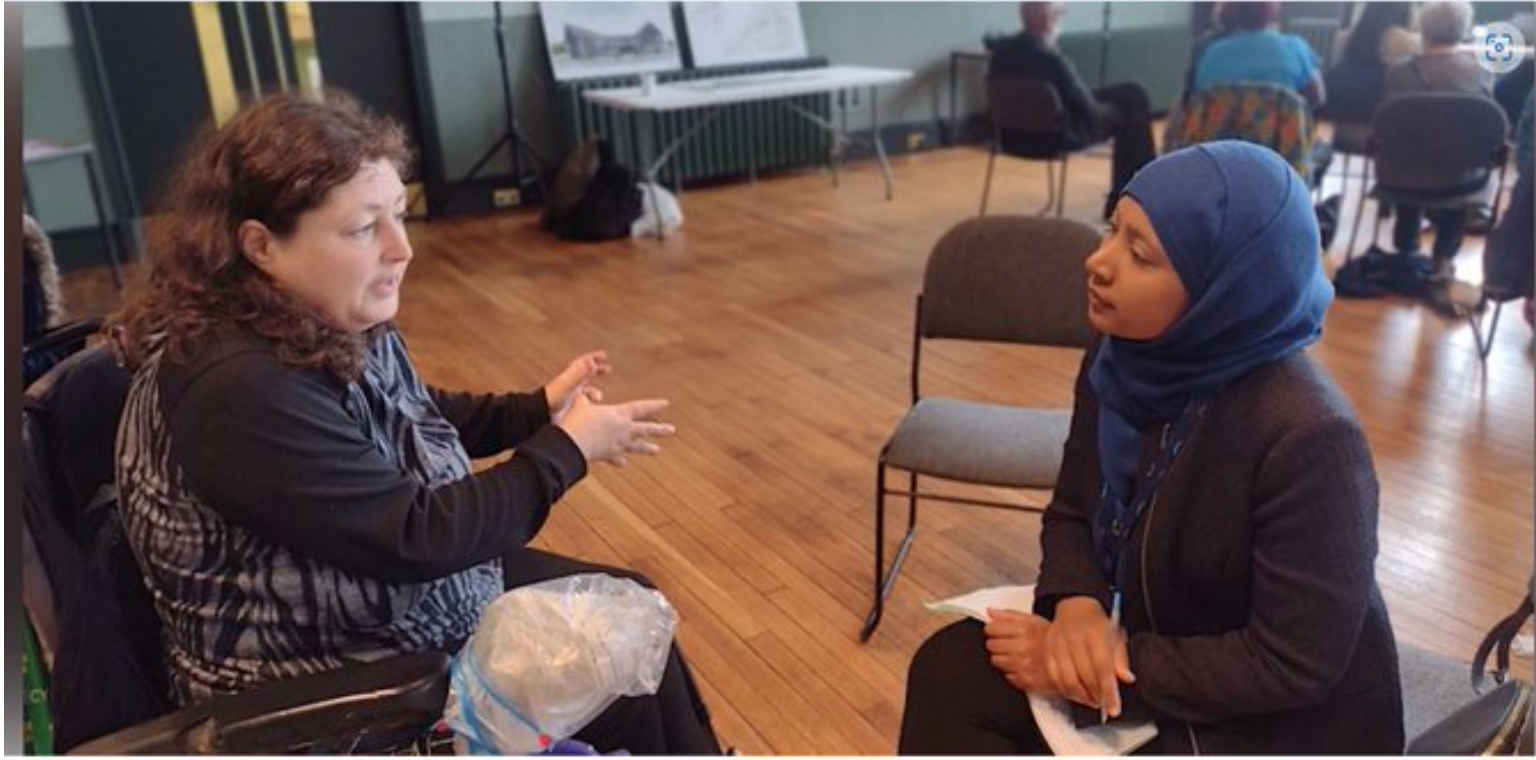By Lily Gordon-Brown (@lilygbrown)
There is little doubt that we are in the midst of a housing emergency. However, it is not only housing which has been subjected to commodification and financialization in recent decades, but also the land that sits underneath it. Land has become a site of speculation and regarded as an asset to be traded on the market. Moreover, recent findings suggest that around 25,000 landowners have control over half England (Shrubsole). This astoundingly unequal state of affairs is a concern for our movement.
To fight these twin crises of land and housing, a movement has emerged. From renter unions, social housing tenants campaign groups, to the big housing NGOs – there is a broad front of organisations pressuring landlords and the government over the right to housing. Alongside this, another movement is looking to challenge the power relations entrenched within land and housing: community-led housing. This forms the focus of the pamphlet that this article introduces
Across disciplines like urban studies, geography, and economics, there is a swelling recognition of the importance of land. Yet this debate sometimes feels confined to the academy, and remote from everyday organisers in our movement. It is time that this work is brought into the mainstream and starts to underpin our own understanding. To this end, my lockdown 2.0. – as well as spending every other hour trawling Indeed for a new job – was consumed by researching the political economy of land, particularly works by the likes of Stuart Hodkinson, Brett Christophers, and Laurie MacFarlane, who respectively explore theories of enclosure, dispossession, land financialization.
In looking into this question, I quickly came across groups attempting to challenge the status quo through the organisational formation of Community Land Trusts (CLTs). CLTs are membership organisations which are classified as ‘non-profits’. They are usually predicated on geographical location and contain a self-defined community. The main purpose of a CLT – one form of community-led housing – is to buy land and retain it in perpetuity by separating the ownership of any given building from the land which it stands upon. CLTs are most used to provide genuinely affordable housing – based on median local income – but the land retained can be put to any use that the community desire, such as winter gardens and community kitchens.
Perhaps the most significant point here is that the land acquired by the CLT is permanently removed from the for-profit speculative market. Any profits generated through the CLT, either through the rents collected from residents or homeowners on the CLT land, must be held as social increment and is to be reinvested back into the community. The primary objective is to de-commodify land and housing and revitalise use value over exchange value.
CLTs are a complex world and invite many questions about whether they can genuinely transform the anatomy of land and housing as it stands. Thus, what initially started as an article proposal morphed into a half-year research project whereby I interviewed CLT members, organisers, and academics from across the UK and the US. It is worth noting that due to the complex nature of the topic and the research limitations imposed by lockdowns, I was not able to cover everything. Rather, the pamphlet intends to answer three main questions:
- What are CLTs and where did they come from?
- What can CLTs offer us in our response to the land/housing crises the UK and the US?
- Do CLTs possess a ‘transformative potential’?
The pamphlet, never intended as either a celebration or condemnation of CLTs, can be understood as an exploration – guided by those at the heart of these projects. However, without giving too much away, it has largely turned out to be a positive appraisal. It includes interviews from CLT organisers in Liverpool, London, New York, and Wisconsin and with academics who dedicate a great deal of their work to researching CLTs and the opportunities and limitations they might offer. The interviews were wide-ranging and informative, and tempted an imagining of a world where land use is determined by and for the community, and shelter is seen as a home and not an asset.
The pamphlet also considers land commissions, community wealth building and public-private partnership models, each of which intersect with the discussions around CLTs – which constitute only one part of a much larger movement to challenge the status quo. Nor does the pamphlet underplay the central role that public housing has to play in any solution to the housing emergency.
That all said – we hope you get hold of a pamphlet which is now available to order in printed form, using the instructions below. A digital version of the essay will be uploaded in due course here too.
Please don’t hesitate to contact me on Twitter or via email on lilsgb@outlook.com if you would like to further these discussions or bring anything forward that I have missed throughout work. As a Master’s student studying housing and community planning, these discussions already dominate my mind!
The Housing Crisis is a Land Crisis
£4.00 each (includes p&p).
Bundle deal with The Myth of the Good Landlord pay £5 and get the pair! (SOLD OUT)
Details on how to order: Please send money via paypal to paypal.me/gmhousingaction, be sure to un-click 'paying for goods or services' (so we don't lose 30p to Paypal fees!), and include your address. We’ll get it posted out to you!
To order a larger number of this pamphlet, please get in touch gmhousingaction@gmail.com.
18 December 2021





